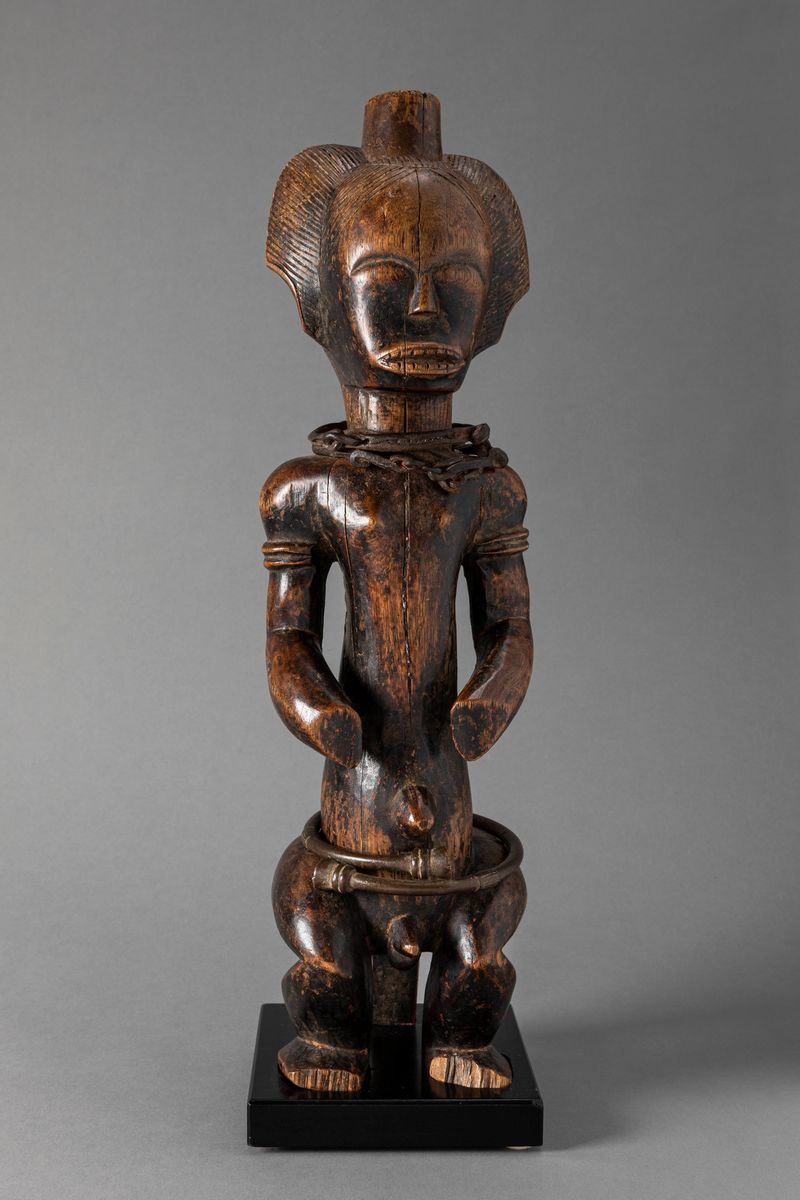Information
Byeri male reliquary figure.
Light-coloured medium-dense wood covered with a black glaze, traces of erosion, old fractures, and indigenous restorations. It has a hand-crafted iron necklace and a fitted copper belt.
This represents an ancestral figure (byeri), sculpted following the style that the specialist Louis Perrois has identified as Ntumu, a subgroup of the Fang people located in South Cameroon, north-west of Gabon and around Equatorial Guinea.The main characteristics of this group are:Head of average proportion to a prominent brow, a sleek, slender torso, arms extended from the body, short legs, the trunk of the body sitting on a support beam.These sculptures, preserved in a family sanctuary, were placed on wicker boxes that contained the skulls and remains of the ancestors who had founded their clan’s lineage. During commemoration ceremonies, a mixture of magic substances, sacrificial blood, palm oil, and resins were dripped onto the wood, as this granted the statue its life force.
Provenance
Ex collezione Eduard Hess (2002);Collection of Walter Schwab, Bern (inv. WS 542) (2002);
An old label stuck on the back reads “Africa Camerun 1890” A second handwritten note on the wood displays the date 1912;
Literature
PERROIS LOUIS, Arts du Gabon, Arnouville 1979 (119);
LABURTHE-TOLRA PHILIPPE & FALGAYRETTES-LEVEAU CHRISTIANE, Fang, include un estratto dell’opera di Gunther Tessmann “Les Pahouins” del 1913 tradotto in francese, Fondation Dapper Paris 1991, pagg. 120 - 123 (277);
Specialist Notes
Contact
Condition report
Suggested lots
Caricamento lotti suggeriti...













